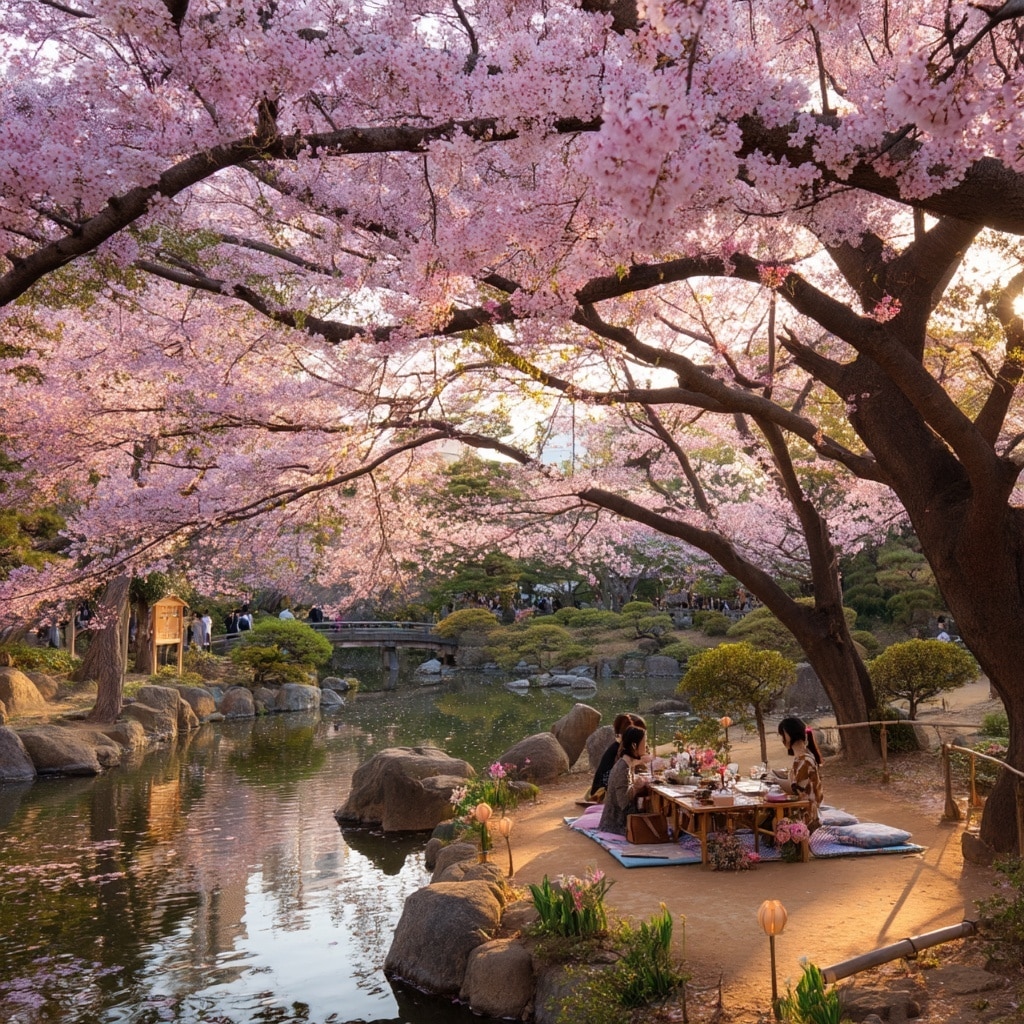Cherry blossom tree is a name that instantly evokes images of soft pink petals drifting through the air, signaling the arrival of spring. Loved for its elegant blooms and symbolic significance, this ornamental tree brings a touch of serenity and timeless beauty to gardens across the world. Whether you’re a seasoned gardener or just starting out, understanding the cherry blossom tree’s needs and traits can help you nurture one successfully in your own yard. From planting and care to growth habits and cultural meaning, this guide covers everything you need to know to grow a healthy and stunning cherry blossom tree.
Symbolism and Cultural Significance of the Cherry Blossom Tree
The cherry blossom tree holds deep cultural meaning, especially in Japan, where it is known as Sakura. For centuries, it has symbolized the fleeting nature of life, representing beauty, renewal, and the delicate balance between joy and impermanence. The tree’s short bloom cycle—typically just a couple of weeks—reminds observers that life is both precious and temporary.
Every spring, communities across the globe gather for cherry blossom festivals. These celebrations, inspired by Japan’s ancient Hanami tradition, attract thousands of visitors to admire the trees in full bloom. In the United States, the most famous example is the National Cherry Blossom Festival in Washington D.C., commemorating the 1912 gift of cherry trees from Japan. This act of goodwill has since blossomed into a lasting cultural connection and one of the most beloved seasonal events in the country.
Beyond festivals, the cherry blossom tree is often planted in parks, gardens, and memorial sites as a living symbol of peace and renewal. Its ability to evoke emotion through simple, natural beauty makes it much more than just another ornamental tree—it’s a botanical emblem of hope and harmony.
Cherry Blossom Tree Characteristics
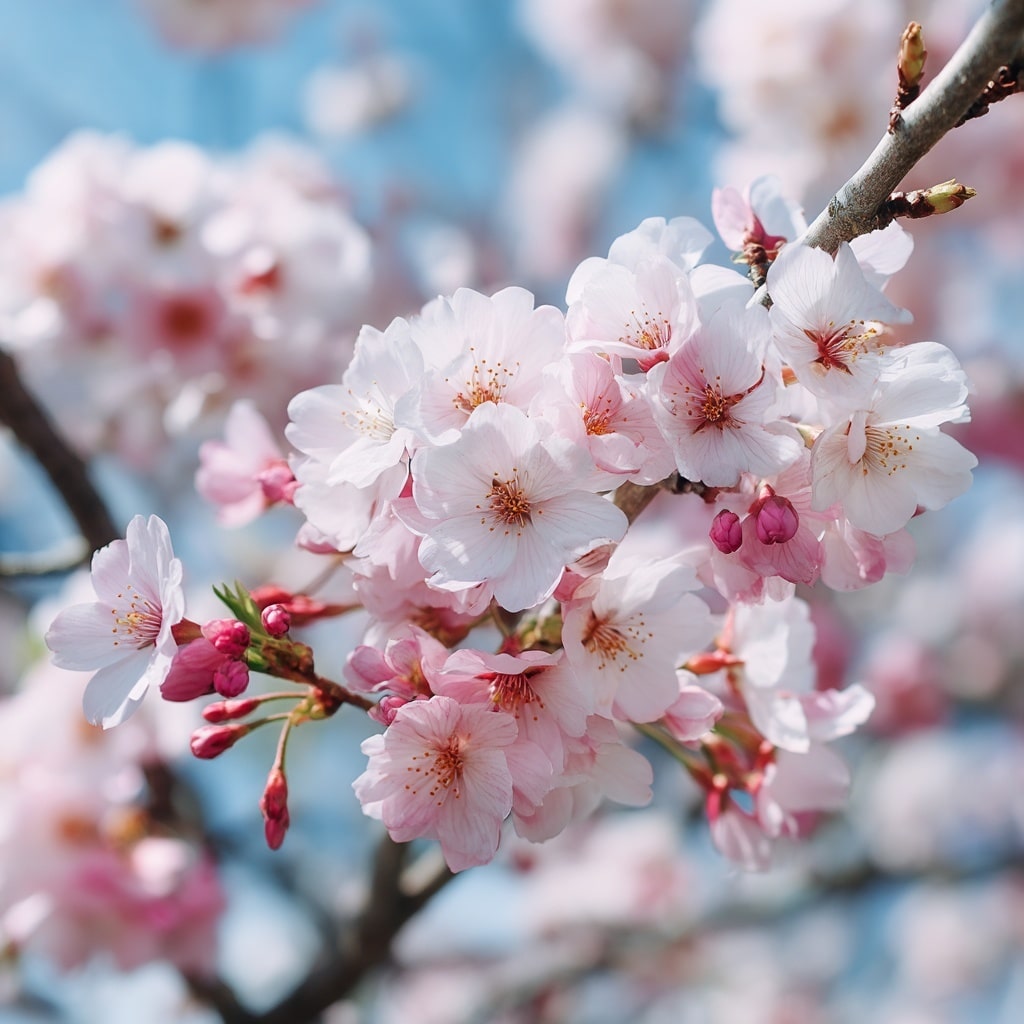
The cherry blossom tree is best known for its breathtaking spring flowers, which range in color from soft pinks to pure whites. These blooms emerge in clusters along bare branches before the leaves appear, creating a dramatic floral display that stands out in any landscape.
There are several varieties of cherry blossom trees, but the most iconic is the Yoshino cherry (Prunus x yedoensis), often featured in parks and festivals. It produces delicate, pale-pink flowers with a light fragrance and is the primary species seen in Washington D.C.’s cherry blossom displays. Another popular variety is the Kwanzan cherry, which boasts vibrant double-pink blooms and a slightly later blooming period.
While they may look like fruit trees, ornamental cherry blossom trees do not produce edible fruit. Any small cherries that form are generally unpalatable and usually eaten by birds rather than humans. This lack of fruit is actually a benefit for gardeners looking to avoid messy clean-up or pests attracted by fallen produce.
Growing Conditions for Cherry Blossom Trees
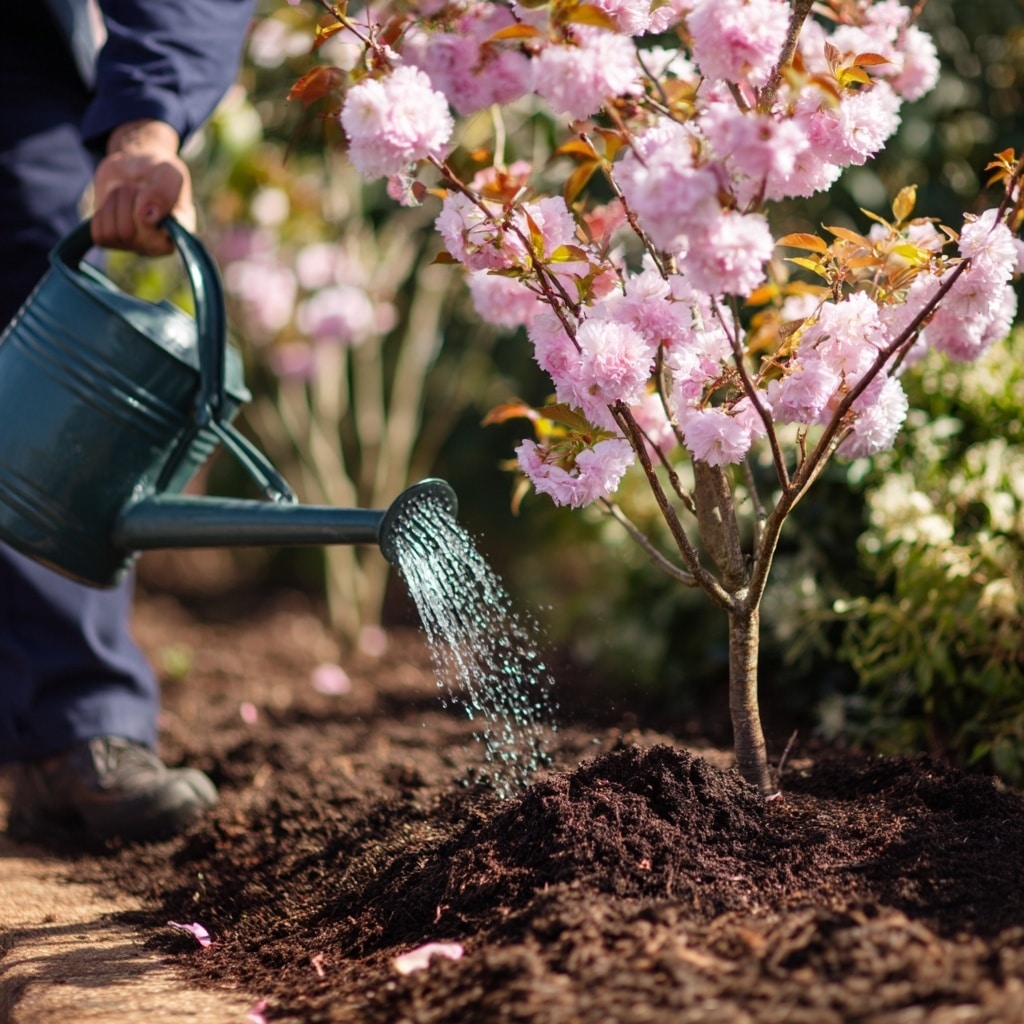
To grow a healthy cherry blossom tree, selecting the right location and providing ideal care from the start is essential. Fortunately, these trees are fairly adaptable and thrive in a range of environments with the right attention.
☀️ Sunlight
Cherry blossom trees prefer full sun for optimal flowering, though they can tolerate partial shade. Ideally, plant them in a spot that receives at least six hours of sunlight per day. In hotter or drier climates, some afternoon shade can help protect the tree and preserve soil moisture.
🌱 Soil
A well-draining, moist soil is key to supporting root health. While cherry blossom trees can adapt to sandy, loamy, or even light clay soils, they thrive in slightly acidic conditions with good drainage. Avoid areas where water tends to pool, as standing water can lead to root rot.
💧 Watering
During the first year after planting, consistent watering is critical. Aim to water once a week, deeply enough to soak the soil to a depth of 12–18 inches. Once established, cherry blossom trees become more drought-tolerant and typically only need water every 2–3 weeks, depending on rainfall and soil type.
To conserve moisture and regulate soil temperature, apply a layer of mulch around the base of the tree—just be sure to keep it from touching the trunk directly.
By creating the right conditions from the beginning, your cherry blossom tree will reward you with years of vibrant blooms and graceful growth.
Where to Plant Cherry Blossom Trees
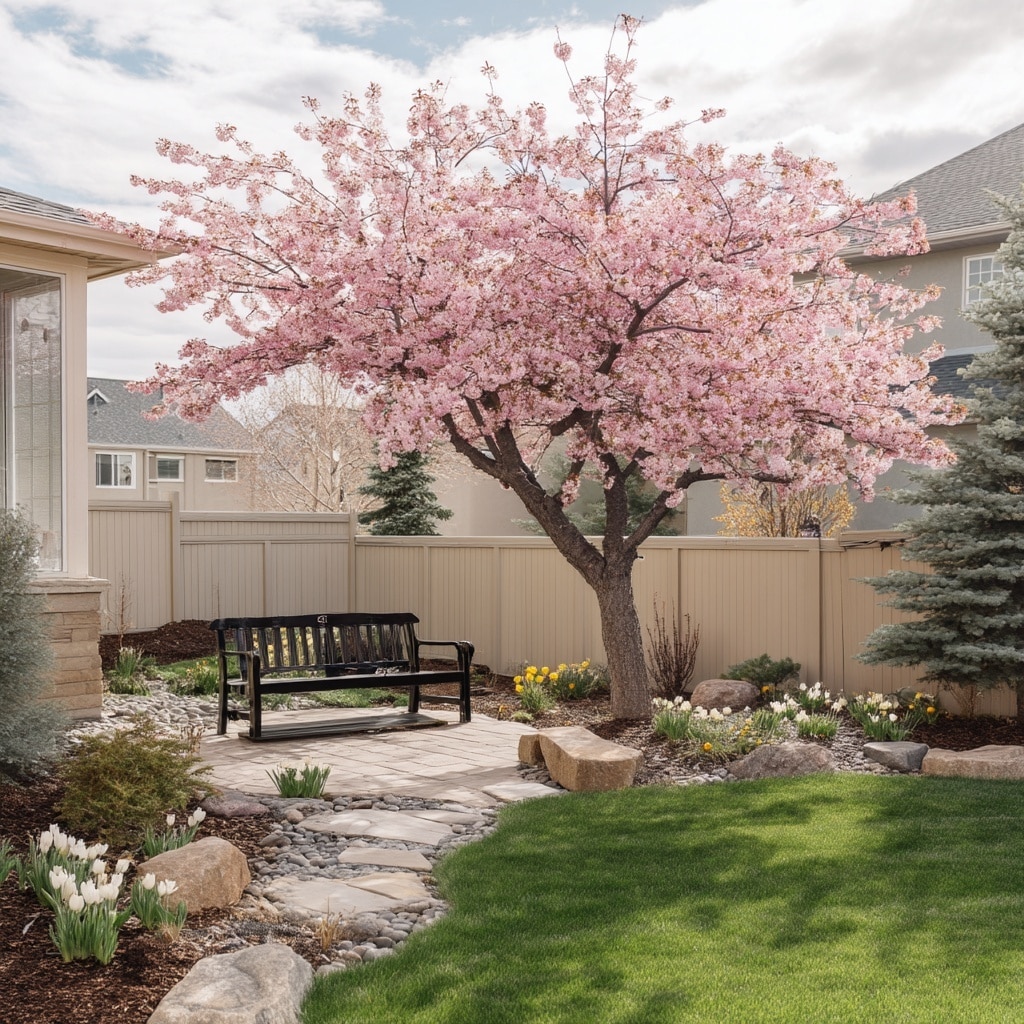
Choosing the perfect spot to plant your cherry blossom tree makes all the difference in how well it thrives—and how much beauty it adds to your landscape.
🏡 Best Regions for Planting
Cherry blossom trees grow best in USDA Hardiness Zones 5 through 8, which includes much of the United States’ temperate and subtropical regions. These zones offer the cool winters and mild springs that trigger the tree’s famous flowering cycle. Whether you’re in the mid-Atlantic, the Pacific Northwest, or the southern plains, there’s a good chance your yard falls within the ideal range.
Around the world, cherry blossom trees flourish in countries such as Japan, South Korea, Germany, Canada, and Australia, making them truly global favorites. They adapt well to various climates when given the right care.
🌳 Landscape Placement Ideas
Thanks to their medium size and attractive form, cherry blossom trees are incredibly versatile in the landscape. Here are some popular ways gardeners use them:
- Centerpiece Trees: Use as a focal point in front yards or open lawns.
- Accent Trees: Plant near patios or garden benches for a relaxing view.
- Border Planting: Line walkways, driveways, or fences with multiple trees for a striking seasonal effect.
- Shade or Screening: Use in clusters to provide partial shade or soft privacy.
Wherever you choose to plant your cherry blossom tree, ensure it has room to spread—both above and below ground. A mature tree can reach a canopy width of 25 to 30 feet, so avoid tight corners or planting too close to buildings or fences.
Growth Rate and Mature Height
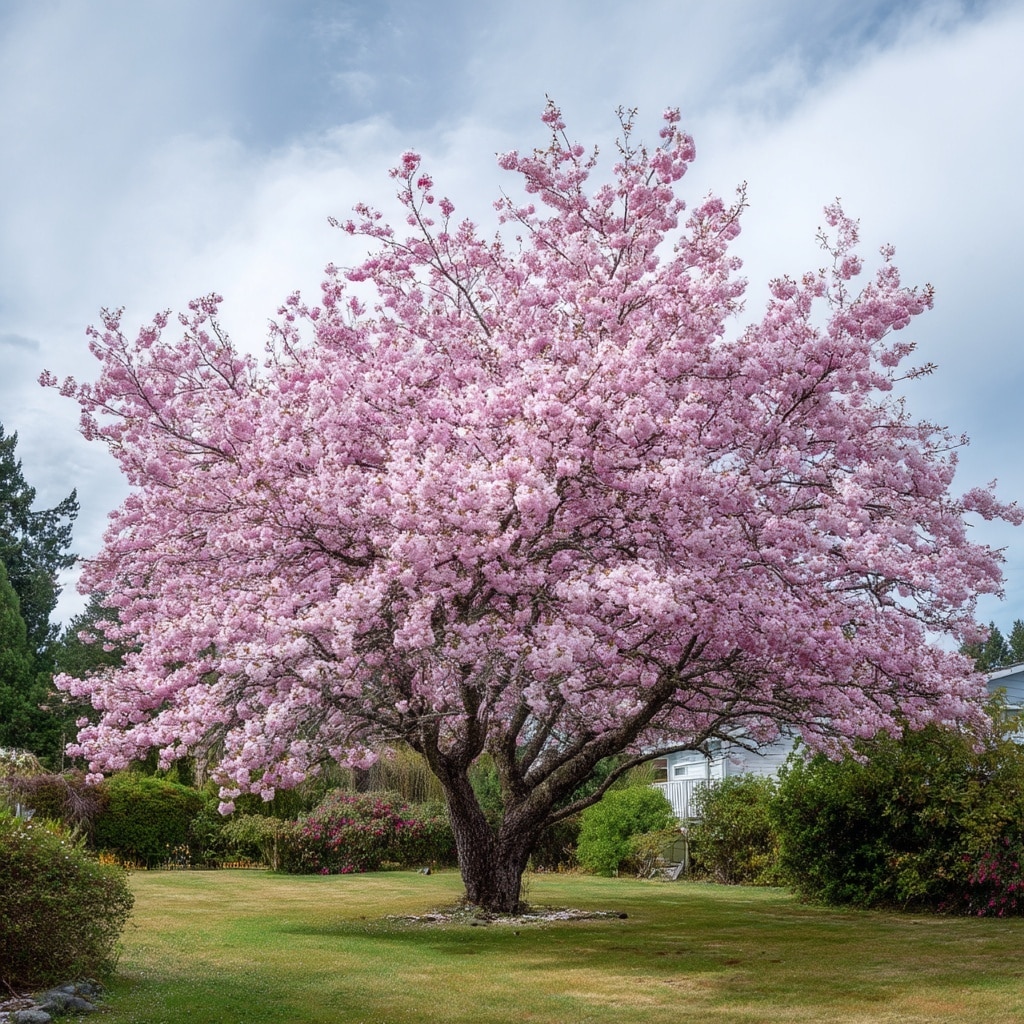
The cherry blossom tree is classified as a medium-growth ornamental tree, making it a manageable choice for most gardens. With the right conditions, it grows 2 to 4 feet per year, gradually developing into a stunning springtime showpiece.
At full maturity, most cherry blossom trees reach a height of 40 to 50 feet, with a spread of 25 to 30 feet, depending on the variety. Their naturally rounded canopy requires little shaping, making them relatively low-maintenance in terms of pruning.
For homeowners with smaller yards, dwarf or compact varieties—such as the Snow Fountains or Weeping Cherry—are great alternatives. These options typically stay under 20 feet tall while still offering beautiful blossoms and a graceful silhouette.
If you’re looking for a tree that grows steadily without becoming overwhelming, the cherry blossom tree fits the bill perfectly. With a little space and some patience, you’ll be rewarded with breathtaking blooms year after year.
Pests and Diseases
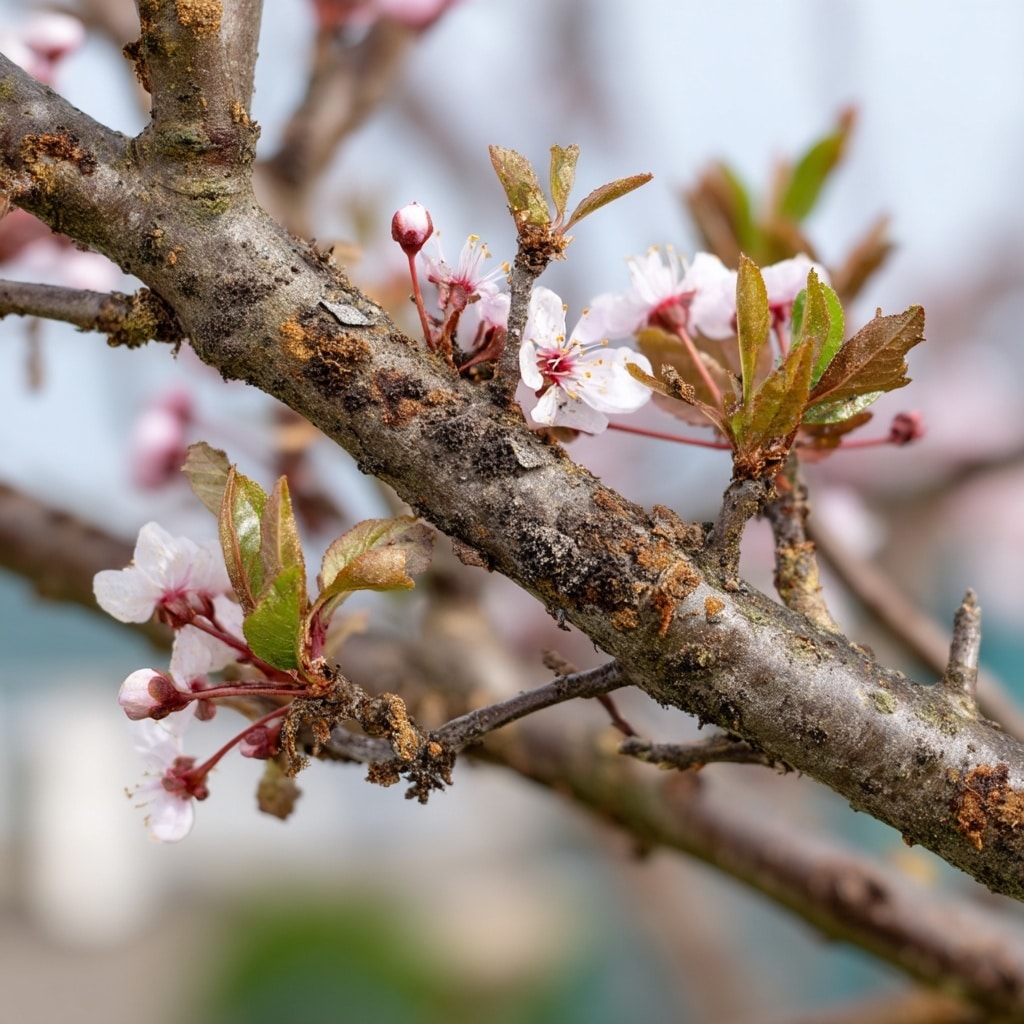
Although the cherry blossom tree is generally hardy and low-maintenance, it’s still vulnerable to a few pests and diseases, especially if neglected or stressed by poor growing conditions. Early detection and proper care are key to keeping your tree healthy and vibrant.
🦠 Common Diseases
- Black Knot Fungus
This fungal disease creates hard, dark growths along branches and twigs. Left untreated, it can kill off sections of the tree. Promptly prune and dispose of infected branches during dormancy, and avoid overhead watering to limit fungal spread. - Silver Leaf Disease
While not always obvious at first, this condition gives leaves a faint silvery sheen and leads to branch dieback. The best remedy is removing affected branches with sterile tools and promoting overall tree vigor.
🐛 Common Pests
- Black Cherry Aphids
These small insects feed on sap, causing leaves to curl and deform. They also leave behind a sticky residue that encourages sooty mold. Use insecticidal soap or neem oil early in the season if you notice aphid activity.
🌿 Prevention Tips
- Keep your cherry blossom tree well-watered but not soggy.
- Use mulch to regulate soil temperature and retain moisture.
- Prune only during the dormant season to avoid stress and reduce risk of infection.
- Always sanitize pruning tools to prevent disease spread.
Healthy, well-maintained cherry blossom trees are far less likely to suffer from major issues. With minimal intervention, you can enjoy a tree that thrives for decades.
Interesting Facts About Cherry Blossom Trees

Beyond their striking beauty, the cherry blossom tree carries a fascinating blend of cultural meaning, history, and even culinary use. These facts shed light on just how beloved and symbolic this tree really is.
🌍 Global Symbolism
- In Japan, Sakura is more than just a tree—it’s a symbol of the impermanence of life. Blooming briefly each year, it reminds people to appreciate the present moment.
- The cherry blossom is also used in art, literature, and ceremonies as a metaphor for renewal and the human life cycle.
🍴 Culinary Uses
- While ornamental cherry trees don’t produce edible cherries, their blossoms and leaves are sometimes used in traditional Japanese cuisine.
- Pickled blossoms, called sakura-zuke, are used to flavor and garnish rice cakes, tea, and desserts.
- The leaves contain coumarin, a fragrant but mildly toxic compound if consumed in large quantities—so culinary use is minimal and always carefully prepared.
🐦 Nature’s Buffet
- Though the tiny fruits of some cherry blossom trees are not edible for humans, they provide a valuable food source for birds.
- Insects are also drawn to the early blossoms, making these trees great for supporting pollinators in spring.
From ancient traditions to seasonal festivals and backyard beauty, the cherry blossom tree continues to captivate people all over the world.
Conclusion
The cherry blossom tree offers far more than seasonal beauty—it brings meaning, ease of care, and a timeless charm to any landscape. Whether you’re planting a single specimen or lining your yard with blossoms, these trees reward you with elegance each spring. With minimal maintenance, adaptable growing conditions, and deep cultural roots, the cherry blossom tree is a worthy centerpiece for both new and experienced gardeners alike.


